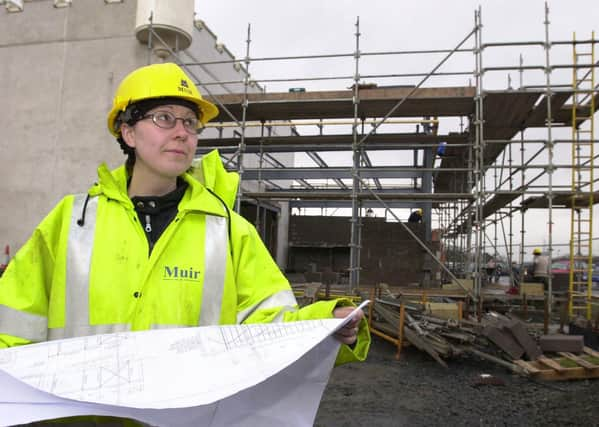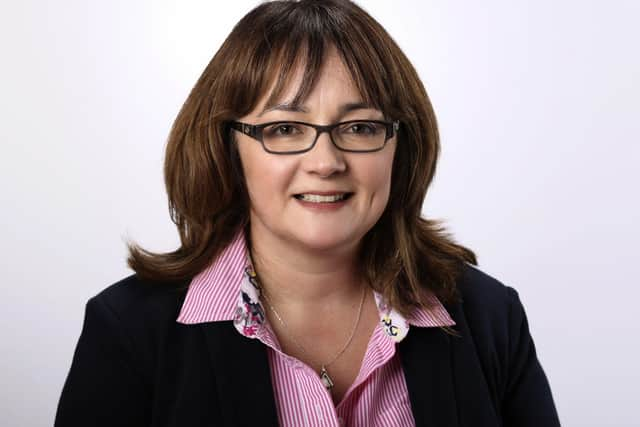Put the building blocks in place to make space for our female engineers – Emma Dickson


National Women in Engineering Day was launched in the UK on 23 June, 2014 by the Women’s Engineering Society to celebrate its 95th anniversary. Since then, the day has grown enormously and in 2017 became international to enable the celebration of women in engineering to become global.
This year there is cause for optimism with a steady increase in the numbers of women entering engineering courses. However, we have much to do to increase and retain the numbers of women in our sector and to address the disparity, especially in senior roles.
Advertisement
Hide AdAdvertisement
Hide AdThere are two experiences which engaged me as a young woman with civil engineering in the early 90s. Firstly, industry links at school/university; a one-week ‘women in engineering’ event, summer placements with Tarmac Construction, and company sponsorship throughout university.


Secondly, I worked with six women site engineers during summer placements, and on graduation. I had several good mentors, which fell out of an excellent training scheme for young engineers. It certainly wasn’t a diverse and inclusive utopia, but it set me up positively, and is why I push the importance of early industry engagement, mentors and networks for any woman entering the sector. STEM activity varies in schools, dependant on the passion of key individuals. Industry participants, including many ICE members, use volunteer days to present to children, but the good work can be undone when schools do not understand the next career steps or, along with some parents, discourage girls from taking it further. We need to continue to engage with parents, carers and teachers to ensure girls are positively encouraged to explore engineering.
Engineering should have been embedded into the curriculum a long time ago, making it more of a natural choice for all children. An engineering project crams in subjects and skills way beyond maths and physics, and coupled with better work placement opportunities which positively engage girls, we could make STEM the norm for all.
In 2016/17 29,200 (17.5 per cent) women enrolled in Engineering and Technology courses across UK universities. Two years later this increased to 31,800 (19 per cent). Some Civil Engineering courses attract more than 25 per cent, and ICE now receives approximately 45 per cent of applications for Quest Scholarships from Women.
The challenges begin again at graduation when 70 per cent of women with STEM qualifications leave to work in another sector. Whilst engineering degrees can set someone up for a multitude of careers, we need to accept much of the loss is down to misconceptions and workplace conditions.
Constructionarium, industry mentoring schemes and workshops all create opportunities for industry to engage with potential employees. If industry connections were strengthened, the 70 per cent would decrease as misconceptions are dealt with. I often received 15-plus CVs for summer placements when working with Carillion – none from women. I used our industry connection to a local university to encourage women undergraduates to apply and this increased the diversity of our summer students and graduate applications.
A 59,000 shortage in engineering in the UK each year should drive industry towards talent attraction and workplace improvements. However, 60 per cent of women experience sexism in the workplace, with a third too uncomfortable to escalate it. This, coupled with lack of female role models in industry and other barriers, shows we are not creating workplaces on which women can thrive.
Potential employees/graduates are targeting companies known for good diversity and inclusion practices, so this may help spark change. The new generation, no matter what gender, religion or race, are looking for flexible working, work-life balance and a dynamic workplace, and won’t join our industry if we do not modernise.
Advertisement
Hide AdAdvertisement
Hide AdI would suggest using the Inclusive Value or WISE Campaign Toolkit (free), which give employers tangible actions to get started; interventions have to be visible, genuine and positive.
The real step change in diversity and inclusion will probably come via more client-driven inclusive growth projects. The SE Scotland City Region Deal has provided a strong focus for future improved gender balance through, for example, ring fencing 60 per cent of advanced MSc programme funding for women applicants to support and grow the number of women at senior roles in the sector.
My final point returns to the importance of networks. ICE Scotland and CIHT are developing ‘Inclusive Infrastructure Scotland’, a network for women and other minority groups in infrastructure design and construction. It will create mentoring opportunities and seek to greater understand and address the challenges minorities face working in the sector. The steering group and activities are evolving, but watch out for our summer launch event on the CIHT and ICE websites.
Emma Dickson, Incoming ICE Scotland Chair and Technical Director, Arcadis
Comments
Want to join the conversation? Please or to comment on this article.